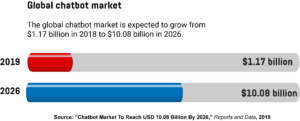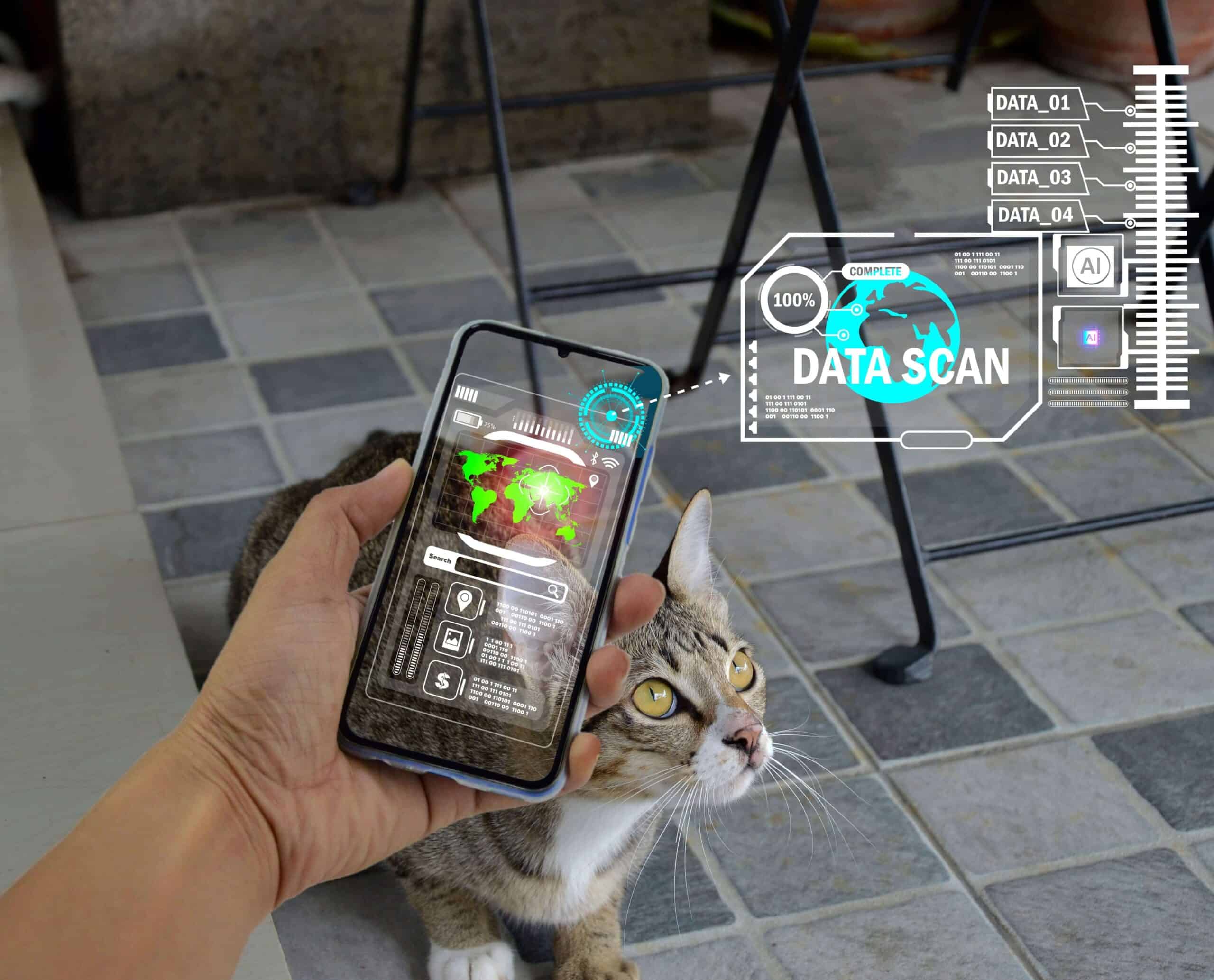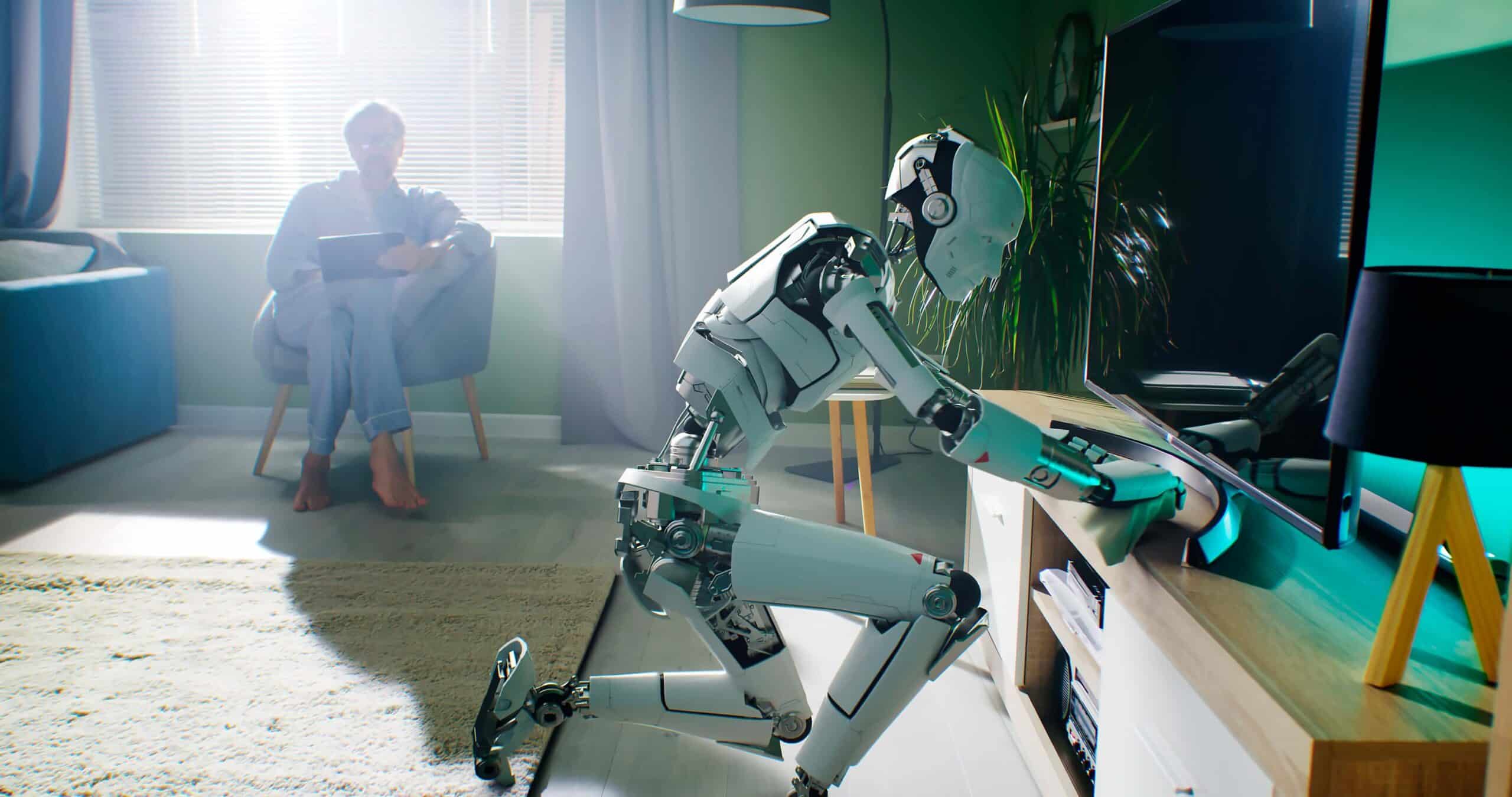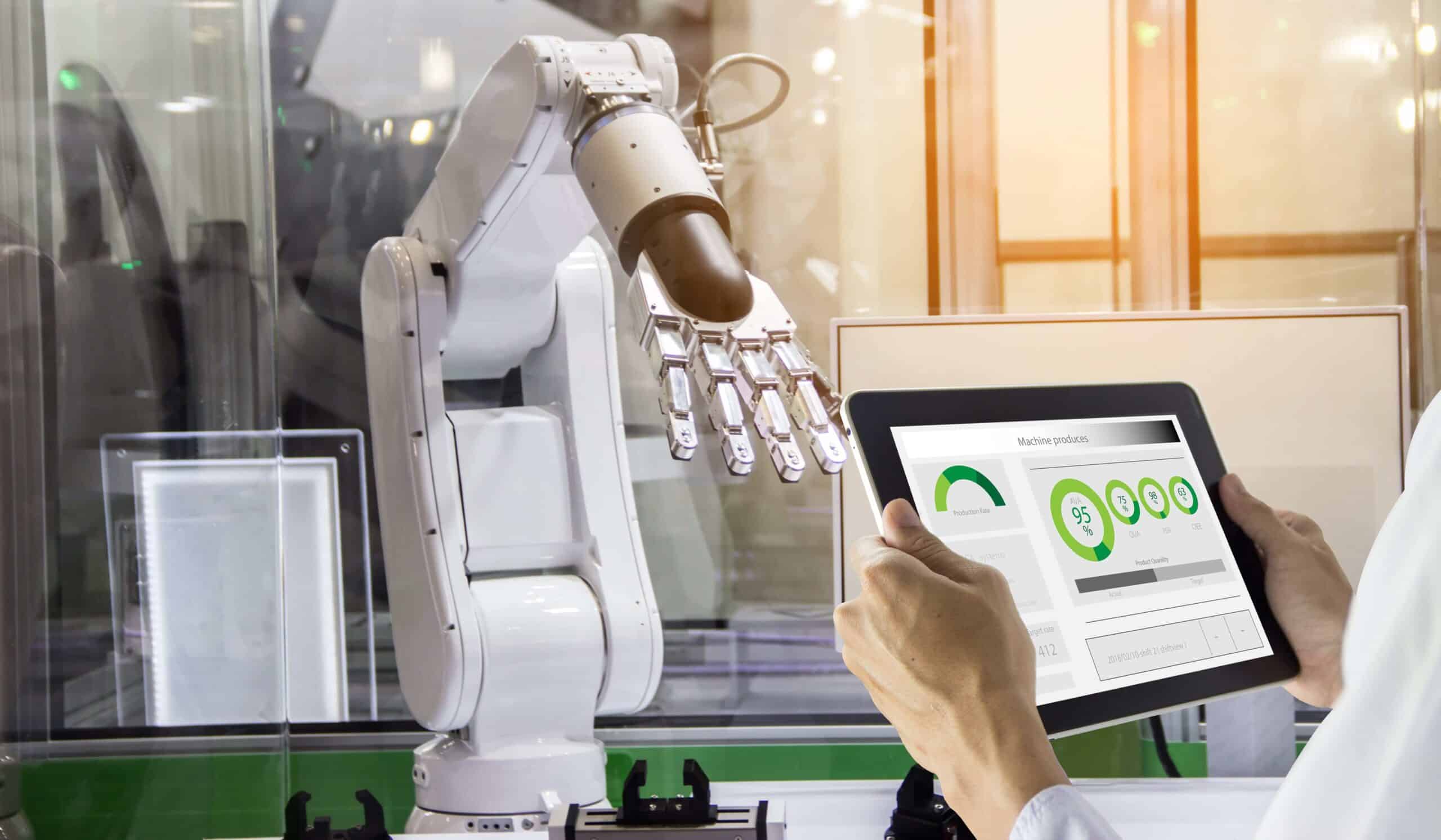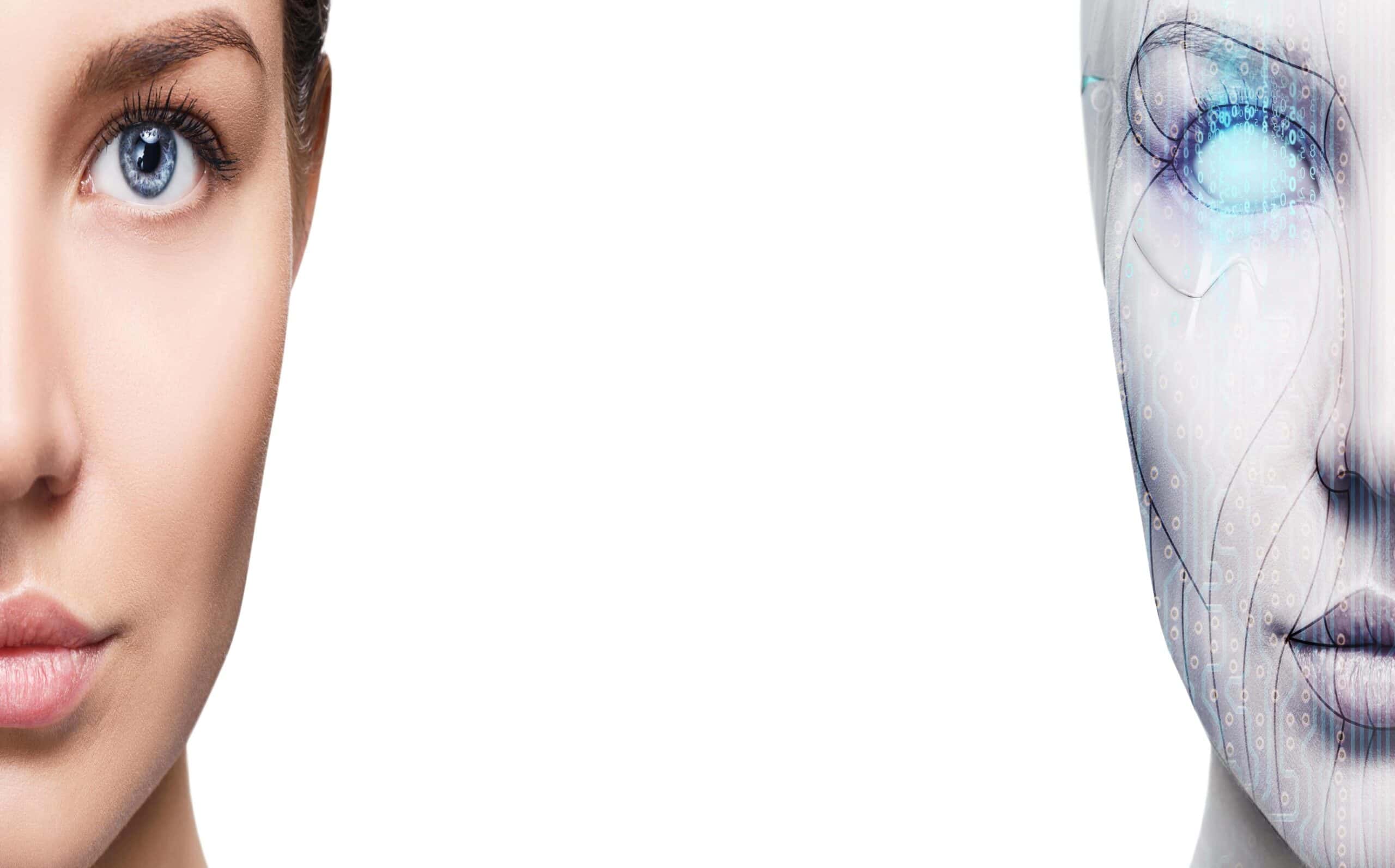- Samsung unveils an artificial human called Neon
- Soul Machines’ digital employees could revolutionise customer experience
- Solving the world’s mental health crisis with the help of digital humans
- Are digital humans the future of customer interaction?
Chatbots have become incredibly popular in recent years. Whether you’ve come across them on social media platforms, corporate websites, or even your own smartphone, chatbots are increasingly used across industries to handle customer queries and improve user experience. According to a recent report published by Reports and Data, the global chatbot market is predicted to grow from $1.17 billion in 2018 to $10.08 billion in 2026. As artificial intelligence technology continues to advance further, chatbots are expected to become even more sophisticated and capable of performing increasingly complex tasks. In fact, the next step in the evolution of chatbots may already be here in the form of digital humans, offering a glimpse into the future of customer interaction.
Samsung unveils an artificial human called Neon
At CES 2020 in Las Vegas, the South Korean tech giant Samsung officially unveiled its latest artificial intelligence project called Neon. Developed by the company’s subsidiary Samsung Technology and Advanced Research Labs, or STAR Labs, Neon is a highly realistic video chatbot that looks and acts like a real human. However, it should not be mistaken for just another novel take on smart assistants. “Neons are not AI assistants,” says the company. “Neons are more like us, an independent but virtual living being, who can show emotions and learn from experiences. Unlike AI assistants, Neons do not know it all, and they are not an interface to the internet to ask for weather updates or to play your favorite music.”
Neons are designed to hold conversations with users and provide assistance in a wide variety of tasks. They can display emotions and intelligence, form memories, and learn new skills. Neons can fulfil a number of different roles, including teachers, healthcare providers, financial advisers, spokespeople, concierges, actors, and TV anchors. While they look and sound like real humans and borrow certain traits from them, Neons aren’t exact copies of any living persons. Each Neon is unique and has its own personality, movements, and facial expressions. “There are millions of species on our planet, and we hope to add one more,” says Pranav Mistry, the CEO of STAR Labs. “Neons will be our friends, collaborators and companions, continually learning, evolving and forming memories from their interactions.”
The technology behind Neon artificial humans is called Core R3, which stands for reality, realtime, and responsive. Hailed by the company as a major advance in behavioral neural networks, evolutionary generative intelligence, and computational reality, this proprietary software has a latency of less than a few milliseconds, allowing Neons to respond to queries quickly and in a lifelike manner. The company claims that Core R3 is capable of creating “lifelike reality that is beyond normal perception to distinguish.” The second piece of the puzzle is another proprietary technology called Spectra, which is responsible for intelligence, learning, memory, and emotions. However, as this technology is still in the early stages of development, the company hasn’t disclosed many details about how it works.
Soul Machines’ digital employees could revolutionise customer experience
The New Zealand-based startup Soul Machines is another company that aims to transform how we interact with machines. To achieve that, the company developed fully autonomous artificial humans that look and sound just like real people. Powered by a cloud-based virtual central nervous system called the Human Computing Engine, which is built on top of IBM Watson and employs Watson Assistant, these incredibly lifelike digital humans can see and hear the people they interact with and use nuanced facial expressions to show their emotions. “We’re heading into a world where we’re going to spend a lot more of our time interacting with machines. We have a fundamental belief that these machines can be more helpful to us if they’re more like us,” explains Greg Cross, the CBO of Soul Machines.
Over the last couple of years, the company has created numerous digital humans and deployed them in a wide variety of real life environments, including airlines, banks, and schools. The most recent example is called Fatema, a new AI-powered digital employee at Bahrain’s Bank ABC designed to answer customer queries and offer them a unique, highly personalised banking experience. In addition to interacting directly with the customers, Fatema will also be responsible for updating the bank’s social media feeds with the latest news. “AI will soon be an inseparable part of our lives, as individuals and as a community at large. It will redefine the workforce and the way we do business across industries including banking and finance. We believe the sooner we recognize its potential and adopt it, the better it is,” says Sael Al Waary, the deputy group CEO at Bank ABC. Fatema is the first digital human created using the company’s new Digital DNA technology, which enables companies to build the ideal digital employee by choosing specific traits, such as eye colour, face shape, hair and skin colour, and age, from a digital gene pool that combines the intelligence and physical characteristics of all the digital humans ever created by the company.
Earlier in 2019, the company created another digital human called Yumi in a collaboration with the Japanese skincare brand SK-II. Built on top of Google’s natural language processing platform Google Dialogflow, Yumi’s task is to answer customers’ beauty questions and offer advice on how to take care of their skin. “YUMI is more than a digital influencer. She is a digital human capable of interacting and engaging in ways technology hasn’t been able to do until now,” says Sandeep Seth, the chief executive officer of Global SK-II. “YUMI personifies our goal to combine technology and creativity to benefit customers. She provides the warmth and connection of human touch in the form of a digital experience to make the overall skincare experience at home and in store more enjoyable and compelling. We’re looking forward to customers being able to turn to her for skincare and beauty questions at any time of the day or night.” While their roles are currently primarily reserved for customer service, the company believes that potential applications are nearly endless and that digital humans could one day also be used to teach classes or provide medical care, among other things. “One day I can be sitting in a board room doing a presentation for a CEO of one of the largest banks or the largest tech companies in the world. Another day I can be sitting down with the biggest celebrities in the world,” says Cross.
Solving the world’s mental health crisis with the help of digital humans
The New Zealand company UneeQ recently joined forces with Sir John Kirwan, a New Zealand rugby coach and celebrated mental health activist, to try to tackle the growing mental health crisis using artificial intelligence technology. To do this, Kirwan announced plans to form a team consisting of mental health professionals, as well as creative and technical experts, who will use UneeQ’s digital human platform to build AI-powered digital mental health coaches. These coaches could then be integrated into existing mental health care programmes to offer people more convenient access to mental health services.
“For many people struggling with their mental health, going to see a specialist comes with fear of the unknown, anxiety or is difficult due to a lack of finances,” says Kirwan. Talking to an AI-powered digital human, on the other hand, involves no risk of judgement, so it’s not surprising to learn that as many as 65 per cent of people would be open to the idea, recent research reveals. These digital mental health coaches will be able to identify each user’s individual needs and preferences, offering them advice on how to improve their mental health and tackle any issues they might face, whether it’s lack of sleep, stress, or anxiety. “They will provide information that can help anyone access a pathway to getting well again,,” says Danny Tomsett, UneeQ’s CEO. “The personal digital mental health ‘coaches’ will combine cutting-edge machine learning with human-like qualities to offer engaging, meaningful conversation and advice to users.”
UneeQ’s digital human platform allows companies to create incredibly lifelike AI-powered digital beings that can use their tone of voice and body language to simulate human conversation and form an emotional connection with customers. These digital humans could have applications in just about any industry, answering customers’ questions 24 hours a day, seven days a week. One of them is Nola, a new team member at Noel Leeming, New Zealand’s largest appliance and technology retailer. Nola will be based at the retailer’s flagship store at Westfield Newmarket in Auckland, where it will help customers navigate the store and answer any questions they might have. “We’re excited to deliver this technology to our customers, and to see how Nola can help enhance their in-store experience,” says Tim Edwards, Noel Leeming’s CEO. “We see her being a new way customers can interact in-store and have committed to growing her across platforms as we learn what our customers like about her and what they want her to help with.”
Are digital humans the future of customer interaction?
In today’s fast-paced society, which has been fundamentally transformed by digital technologies, customers are no longer willing to submit to endless call centre queues or wait for hours to be served by overwhelmed customer service departments. Instead, they want to be served instantly any time they call, whether it’s day or night. And not only that, but they also expect customer service personnel they interact with to identify their needs and remember their history. Unfortunately, that is something human employees simply can’t provide, which is why companies are increasingly employing digital humans to interact with customers. Whether they’re used to provide a more personalised banking experience, offer beauty advice, help shoppers navigate retail stores, or tackle the world’s mental health crisis, digital humans are becoming an increasingly common feature in customer service departments around the world. In fact, they may very well be the future of customer interaction.

